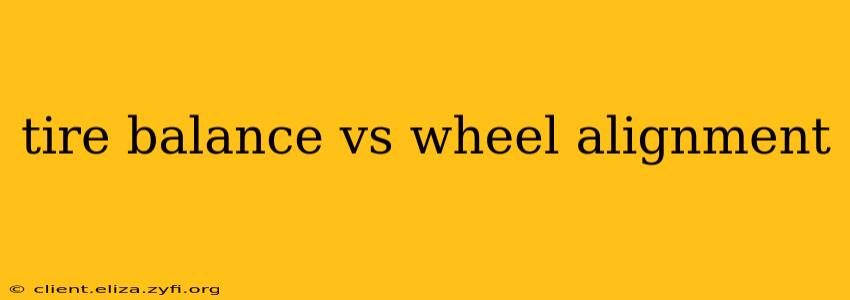Maintaining your vehicle's tires and wheels is crucial for optimal performance, safety, and fuel efficiency. Two common services often cause confusion are tire balancing and wheel alignment. While both impact how your car handles, they address different issues. This article clarifies the distinction between tire balancing and wheel alignment, explaining what each service entails and why they're both vital for a smooth and safe driving experience.
What is Tire Balancing?
Tire balancing focuses on the even distribution of weight around each wheel and tire assembly. An unbalanced tire will have heavier spots, causing vibrations and shaking, especially at higher speeds. This imbalance leads to uneven wear on your tires, reduced fuel efficiency, and potentially damage to your vehicle's suspension components.
During a tire balancing service, a technician uses a specialized machine to identify the heavy spots on your wheels. They then add small weights to the opposite side of the wheel to counteract the imbalance, creating a smoother ride.
How Often Should I Get My Tires Balanced?
It's recommended to get your tires balanced whenever you have new tires installed. Additionally, you should have them checked and balanced at least once a year, or more frequently if you notice vibrations or uneven tire wear.
What is Wheel Alignment?
Wheel alignment, also known as tracking, focuses on adjusting the angles of your wheels to ensure they're properly positioned relative to each other and the vehicle's frame. Misalignment can result from hitting a pothole, driving over rough terrain, or a previous accident.
Improper wheel alignment leads to uneven tire wear, reduced fuel efficiency, and difficulty steering. Your vehicle may pull to one side, feel unstable, or require more effort to steer.
A wheel alignment service involves adjusting the angles of your wheels using specialized equipment. There are three main angles that are adjusted: camber, caster, and toe.
What are Camber, Caster, and Toe?
-
Camber: This refers to the angle of the wheel from top to bottom. A positive camber means the top of the wheel leans outward, while a negative camber means the top of the wheel leans inward.
-
Caster: This refers to the angle of the steering axis from front to back. It affects steering responsiveness and stability.
-
Toe: This refers to the angle of the wheels pointing inward (toe-in) or outward (toe-out) as viewed from above.
During a wheel alignment, a technician will adjust these angles to the manufacturer's specifications, ensuring optimal handling and tire wear.
Tire Balance vs. Wheel Alignment: Key Differences Summarized
| Feature | Tire Balancing | Wheel Alignment |
|---|---|---|
| Focus | Weight distribution around the wheel | Angle of wheels relative to vehicle frame |
| Symptoms | Vibrations, shaking, uneven tire wear | Uneven tire wear, pulling to one side, poor steering |
| Process | Adding weights to balance the wheel | Adjusting wheel angles |
| Frequency | Annually, or when new tires are installed | As needed, after impact or uneven tire wear |
How Do I Know if I Need a Tire Balance or Wheel Alignment?
If you experience vibrations or shaking, especially at higher speeds, it's likely a tire balancing issue. If your car pulls to one side, feels unstable, or you notice uneven tire wear, you likely need a wheel alignment. It's always best to have a qualified mechanic inspect your vehicle to determine the cause of the problem.
Can I do Tire Balancing or Wheel Alignment Myself?
While some DIY enthusiasts attempt tire balancing, it requires specialized equipment and expertise to ensure proper balance. Improper balancing can lead to further damage. Wheel alignment requires even more specialized equipment and knowledge, making DIY attempts strongly discouraged. It's best to leave these services to qualified professionals.
What are the costs involved in tire balancing and wheel alignment?
Costs vary depending on your location and the specific shop you choose. Tire balancing is generally less expensive than wheel alignment. It's always a good idea to call ahead and get a price quote before scheduling service.
By understanding the differences between tire balancing and wheel alignment, you can ensure your vehicle is properly maintained, providing a safe, comfortable, and fuel-efficient driving experience. Remember, regular maintenance is key to prolonging the life of your tires and vehicle components.
